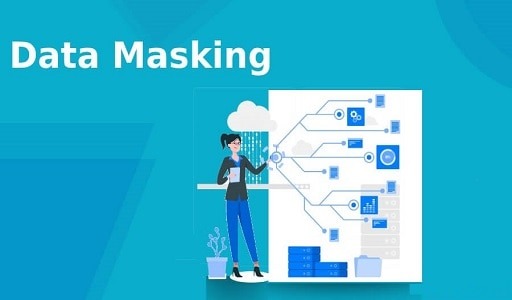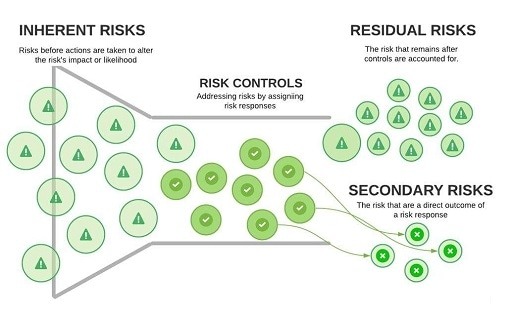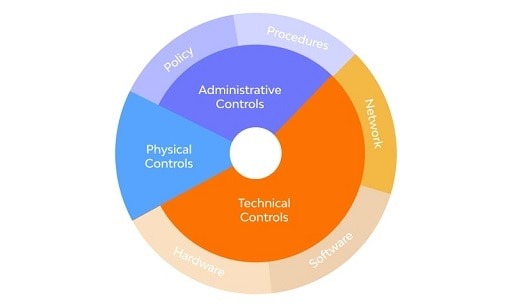Data is a digital currency. The higher its level of sensitivity, the more valuable it is. Cybercriminals have a well-deserved reputation for being able to access even the most secure datasets, and they make no attempt to hide this fact. It’s high time you started thinking outside the box about how to keep your data safe.
Data masking allows you to trick would-be attackers into believing they have been successful while, in reality, your data is safe and sound in a different location. Find out more about data masking and the benefits that can come from using it.

What is Data Masking?
The process of constructing a false or alternative version of your data so that it can be used in place of the original data is referred to as data masking. It’s a way to carry out your responsibilities with a copycat while preventing the original dataset from being compromised or attacked in the process.
When you use data masking, the data that you create will be fake. The names of the characters and the numbers are made up. Both sets of data are comparable, making it difficult for an outsider to distinguish between them despite the fact that their respective values are distinct.
How does Data Masking work?
Data masking is only an option in environments that are not productive. Because of this, it is most helpful for carrying out training, testing, and the creation of software. The process of data masking can take on a variety of shapes and forms. Let’s have a look at a few of them, shall we?
You can also read: Password Locking vs. Encryption: Explained
Data Pseudonymization
The process of renaming your data with a pseudonym is known as data pseudonymization. You come up with a made-up name for the data instead of hiding it under its real name so that no one can discover its true nature.
One of the most straightforward methods of data masking is known as data pseudonymization. Not only is it possible to reverse the process, but doing so does not call for any special circumstances or technological expertise.
Data Anonymization
Anonymity is essential to the success of data anonymization. When you anonymize a dataset, you remove specific information that could be used by other individuals to identify it.
It helps secure the privacy of the individuals or goods that are embodied in the data set without affecting the validity of the data set itself.
Users who have hidden agendas will have a difficult time piecing together the information they need because of the anonymization of the data. In contrast to pseudonymous data, this kind of information does not contain any non-identifiable characteristics.
The Encryption of Data
Encryption is the technique of rendering data inaccessible to anyone who does not possess the corresponding decryption key.
In this scenario, you will make use of the encryption algorithm to conceal the genuine data so that unauthorized users will not be able to access or make use of it. When you want to utilize data encryption for data masking, you first encrypt the original file, and then you produce a copy of the encrypted file.
Throughout the course of your work, you are responsible for bringing forth and presenting to others the duplicate. If someone were to gain access to the location where you encrypted the data, they would not be able to utilize it.
Tokenization
The process of replacing the original values of a dataset with random, non-sensitive characters that have the same appearance as the original values is known as tokenization. Because the token is not authentic, it is useless to intruders who may want to exploit the data for nefarious purposes because it is utterly unconnected. This is due to the fact that the token has nothing to do with the data.
Shuffling
The value of your dataset can be preserved while maintaining its anonymity through the use of an efficient method called shuffling. You achieve it by mixing up the various facts so they are unorganized, losing track of their original origins or owners. The data sets could take on comparable attributes but from distinct sources.
As you shuffle data, you may select the particular pieces of information that you wish to mix up. You have the option of mixing up people’s first names if you are dealing with a group of individuals.
Lookup Substitute
The lookup substitution feature enables one to generate a lookup table that has alternate values that are not connected to the primary data. When working with private information, having this knowledge comes in quite handy. Instead of taking a risk to exhibit it, you substitute it with something that looks very much like it.
You can also read: 5 Reasons Cyber Security is Important for Everyone
What are the advantages of Data Masking?
We can’t all be cyber security professionals with a high level of expertise and the technological know-how to protect networks, can we? When it is both straightforward and all-encompassing, cyber security is easier to achieve.
The following are some of the advantages that come with using data masking, which improves cybersecurity.
-
Enhance Security
There is no such thing as an excessive amount of safety. If anything, there are an excessive number of assaults. You need to step up your efforts to ensure everyone’s safety. Data masking avails you with more alternatives to secure your data.
Cybercriminals are unable to steal or compromise information that is hidden from them. By storing the original data in a safe location and making use of alternative data, you lessen the likelihood that it will be stolen, exposed, or otherwise compromised by unauthorized individuals.
-
Enable Data Sharing
When it comes to the management of private information, you cannot put your faith in anyone. The more people you share it with, the greater the likelihood that it will be seen by additional people.
When you are working on a project that involves input from third parties, this could place you in a very difficult position. You may expect to feel apprehensive about the prospect of sharing sensitive information with outside parties. Your resistance could hinder the workflow.
The process of sharing data is simplified by data masking since it eliminates the need to provide the original information in favor of a copycat version. It is possible for third parties to work with something that appears to be the data without necessarily possessing the actual data.
-
Eliminate Dangers posed by Employees
Humans automatically associate cyber risks with external forces. The picture of an attacker is the evil man in a remote location who is on their computer around the clock trying to breach systems. They ignore the possibility that danger could originate from within the organization. And this is typically what has the greatest impact on them since they were not expecting it.
By masking sensitive data, you can protect yourself against malicious or careless actions carried out by employees working for your company. Because it is not the actual data, you have nothing to worry about even if an insider were to reveal your masked information.
-
Ensure Data Accuracy
When it comes to the validity of your data analysis and execution, one of your primary concerns should be the accuracy of the data. When you repeatedly move your dataset from one area to another, there is a risk that it will be corrupted, even if the purpose was not to cause harm. The reliability of data may be compromised if it is transported in an environment that is not optimal.
Data masking allows you to keep your data at rest. Even while data that is at rest is not totally secure against threats, your ability to contain such threats is greater when the data is at rest as opposed to when the data is in transit. In the course of performing your duties, you are free to exchange and transfer the masked data, and the integrity of the original may always be relied upon.
-
Regulatory Compliance
Whether you administer a network or a web service that stores information about users, you cannot avoid complying with the statutory obligations of data management. This is something that you must do. Some of the policies that you need to adhere to include compliance standards like the General Data Protection Regulation (GDPR) for online interactions and the Payment Card Industry Data Security Standard (PCI DSS) for payment transactions.
You can also read: 12 Ways to Protect Your Smartphone from Cyber Attacks
Because you must always ensure the privacy and confidentiality of users’ data or you risk getting sanctioned, leveraging data masking to enhance the privacy and security of the data in your possession is a win for you. This is because you must ensure the privacy and confidentiality of users’ data in order to avoid getting sanctioned.
Increase your online safety by masking sensitive information.
Your data will be considered more valuable to you if only a limited number of others may view it. The process of data masking helps you to make the most of the opportunities pertaining to your data without exposing it to the risks that could otherwise be avoided.
If you want to get the most out of data masking, you need to keep track of your activities so that you don’t make any mistakes that can’t be undone.
Would you like to read more about Data Masking-related articles? If so, we invite you to take a look at our other tech topics before you leave!










